For many prospective dog owners, the dream companion is one that offers both robust health and a minimal shedding coat. Whether you or a family member suffer from allergies, or you simply desire a cleaner home, finding a dog breed that fits this unique combination can be a delightful challenge. The good news is, several wonderful breeds perfectly embody this ideal, offering a lifetime of companionship without the constant fur cleanup. These dogs are not only known for their low-shedding qualities but also for their generally strong constitutions and fewer common health issues.
Why Choose a Non-Shedding, Healthy Breed?
Opting for a healthy, non-shedding dog breed brings numerous benefits beyond just a tidy home. For individuals with pet allergies, these breeds, often referred to as “hypoallergenic,” can significantly reduce allergic reactions. While no dog is truly 100% hypoallergenic, breeds that shed minimally release less dander (tiny flakes of skin that often trigger allergies), making them much more manageable for sensitive individuals.
Furthermore, selecting a healthy breed can mean fewer vet visits for chronic conditions, less worry about genetic predispositions, and a longer, more active life for your canine friend. These dogs typically come from strong genetic lines and are known for their resilience. This focus on health contributes to peace of mind for pet parents and can even save on long-term veterinary costs. If you’re specifically looking for healthier small non-shedding breeds, there are many excellent options to consider.
Understanding “Non-Shedding” and Hypoallergenic Qualities
It’s important to clarify that “non-shedding” doesn’t mean a dog never loses a single hair. All dogs lose hair, just like humans. However, low-shedding and non-shedding breeds either have a hair type that traps shed hairs within their coat (like Poodles) or they simply grow hair more slowly with a longer growth cycle, resulting in significantly less hair being released into the environment. This characteristic is often what makes them suitable as hypoallergenic small dog breeds. Regular grooming is still essential for these dogs to prevent matting and keep their coats healthy.
Top Healthiest Dog Breeds That Don’t Shed
Here’s a look at some of the healthiest dog breeds renowned for their minimal shedding, offering a perfect blend of vitality and a clean living environment.
1. Poodle (Standard, Miniature, and Toy)
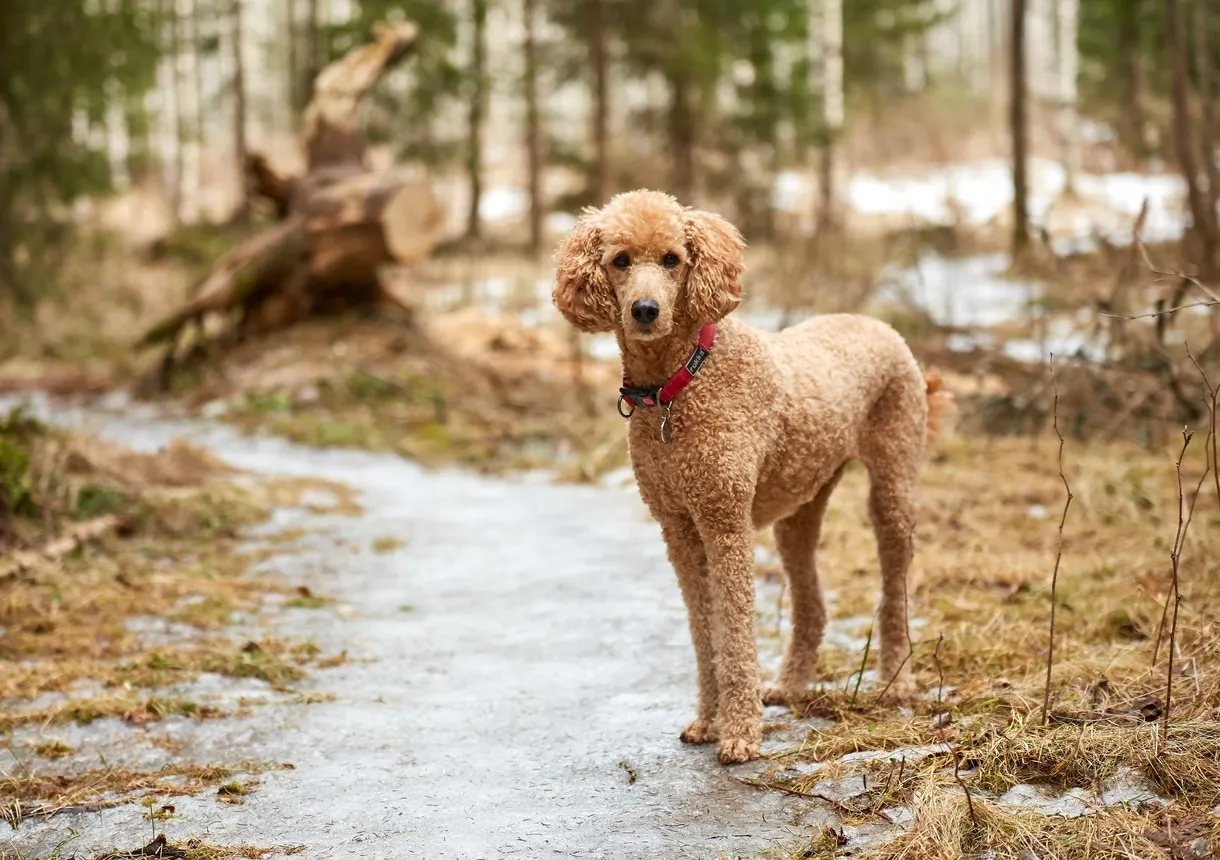 Apricot Standard Poodle looking alert on a forest trail
Apricot Standard Poodle looking alert on a forest trail
Poodles, in all their sizes—Standard, Miniature, and Toy—are not only incredibly intelligent and easy to train but also celebrated for their non-shedding, hypoallergenic coats. These dogs are generally robust and active, enjoying a variety of activities from swimming to advanced obedience. Poodles are known for their longevity and typically face only minor age-related health issues. Their energetic nature requires regular mental and physical stimulation to keep them happy and healthy, making them wonderful pets for active families.
2. Bichon Frise
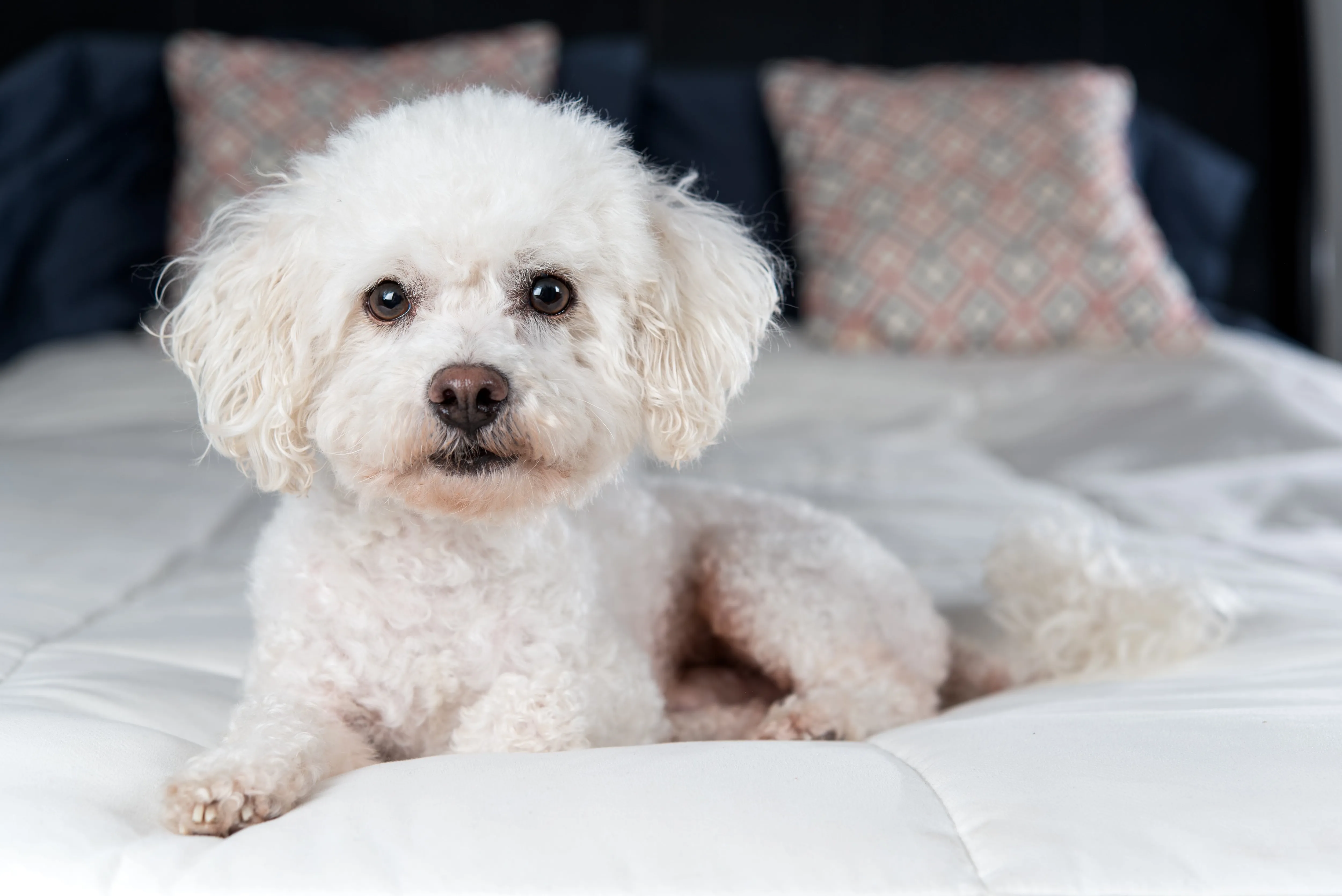 Fluffy white Bichon Frise dog resting comfortably on a soft bed
Fluffy white Bichon Frise dog resting comfortably on a soft bed
The Bichon Frise is a cheerful, playful companion with a cotton-ball-like coat that sheds minimally, making them an excellent choice for allergy sufferers. Despite their small stature, Bichons are energetic and thrive on interaction with their families. They boast an impressive lifespan, often living 14–15 years, and are generally healthy. While they require consistent grooming to prevent matting, their affectionate nature and robust health make them a beloved healthy, non-shedding small dog breed. Pet parents should be mindful of their predisposition to diabetes mellitus.
3. Havanese
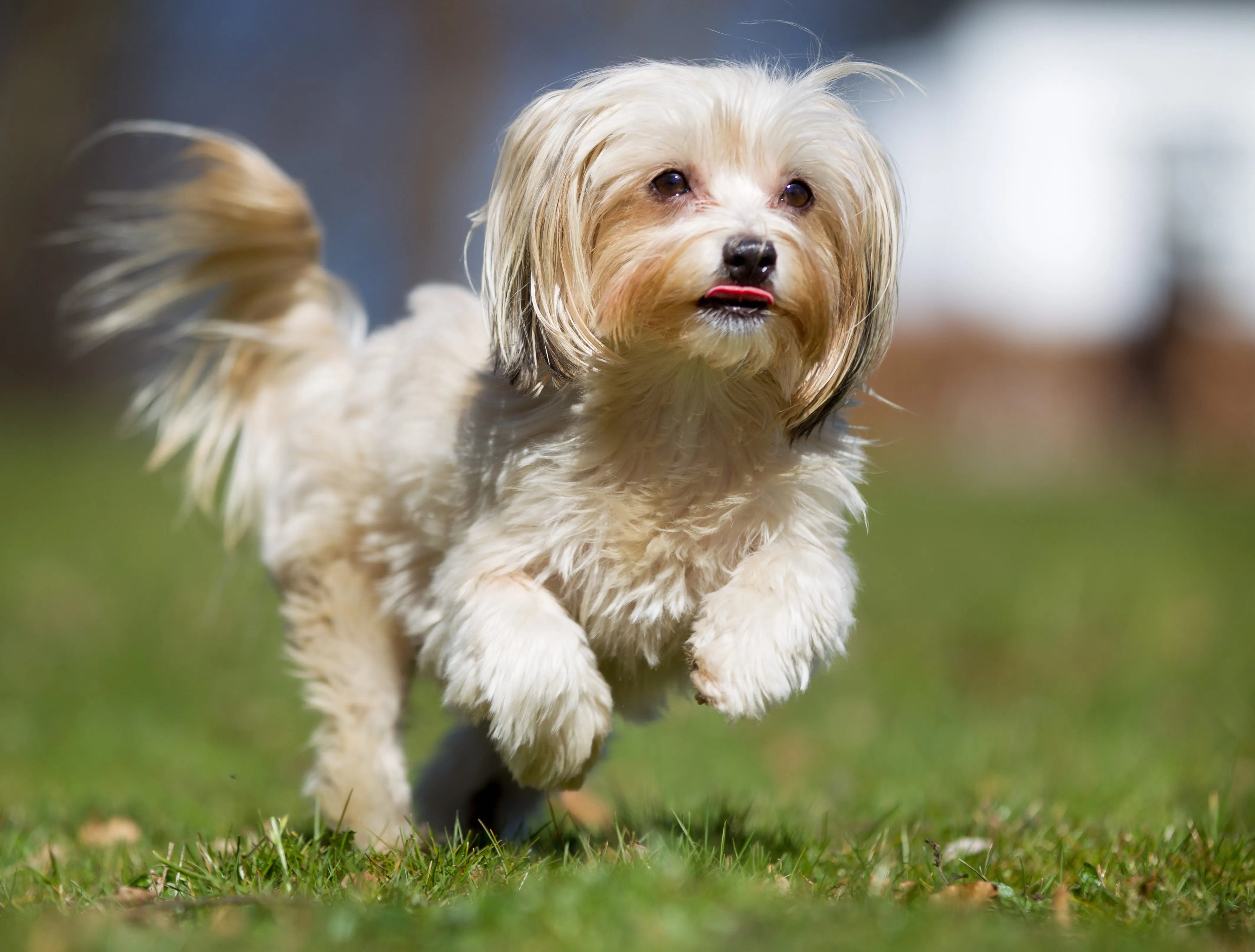 Happy tan and white Havanese dog playing in green grass
Happy tan and white Havanese dog playing in green grass
The national dog of Cuba, the Havanese is an affectionate and intelligent breed with a long, silky coat that is considered non-shedding. Their charming personalities and eagerness to please make them highly trainable and wonderful family pets. Havanese dogs are known for their exceptional longevity, often living 14–16 years. While generally healthy, they can be prone to certain conditions like progressive retinal atrophy and patellar luxation, which responsible breeders screen for.
4. Basenji
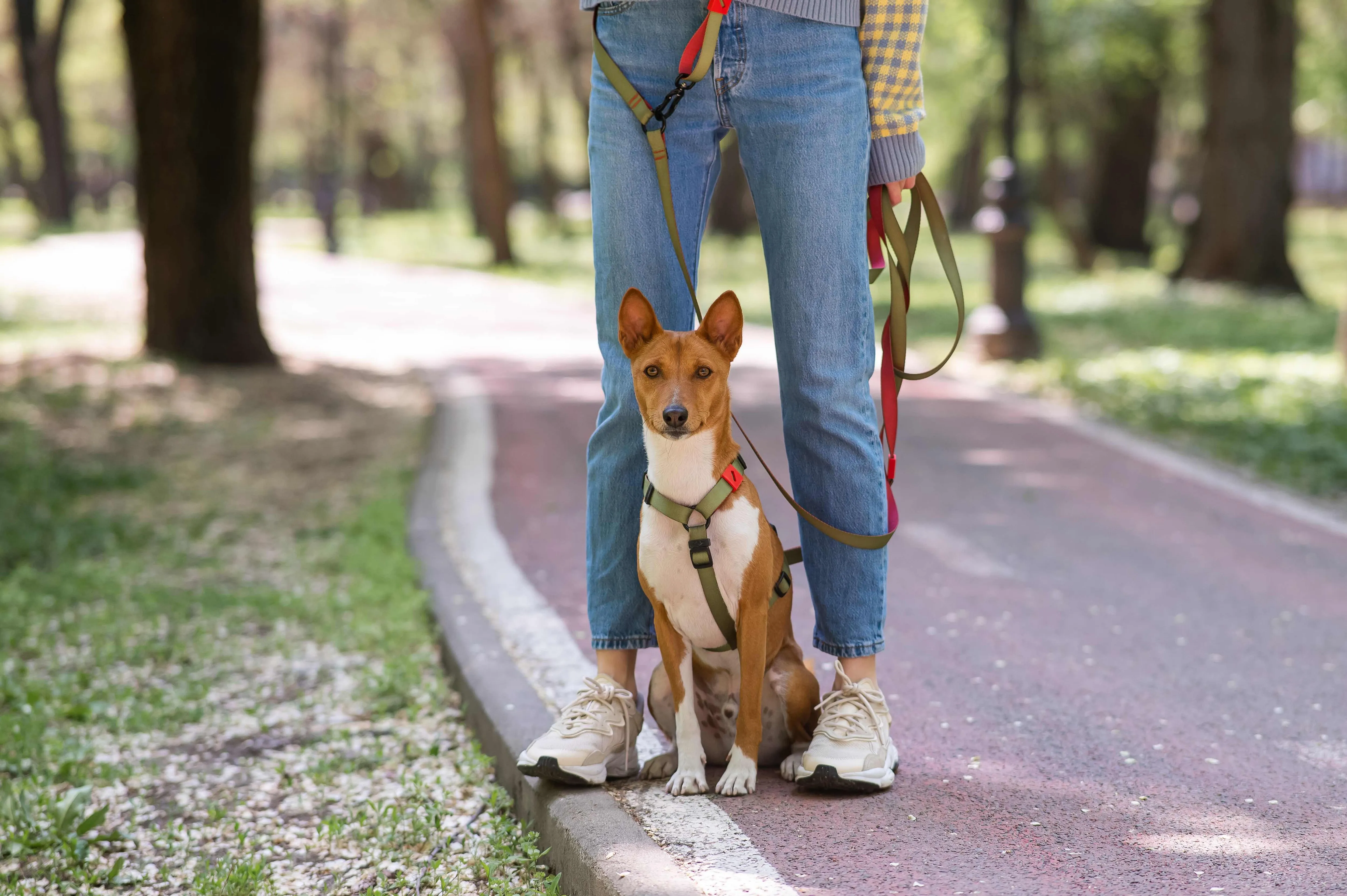 Energetic Basenji dog sitting attentively beside its owner outdoors
Energetic Basenji dog sitting attentively beside its owner outdoors
Often called the “barkless dog” due to their unique yodel-like vocalizations, Basenjis are independent, cat-like dogs known for their fastidious grooming habits and very low shedding coats. These intelligent and energetic hounds require significant mental and physical stimulation to prevent boredom and destructive behaviors. While typically healthy, Basenjis can be genetically predisposed to Fanconi syndrome, a kidney disorder, making regular veterinary check-ups important. Their lean build and active lifestyle contribute to their overall excellent health.
5. Whippet
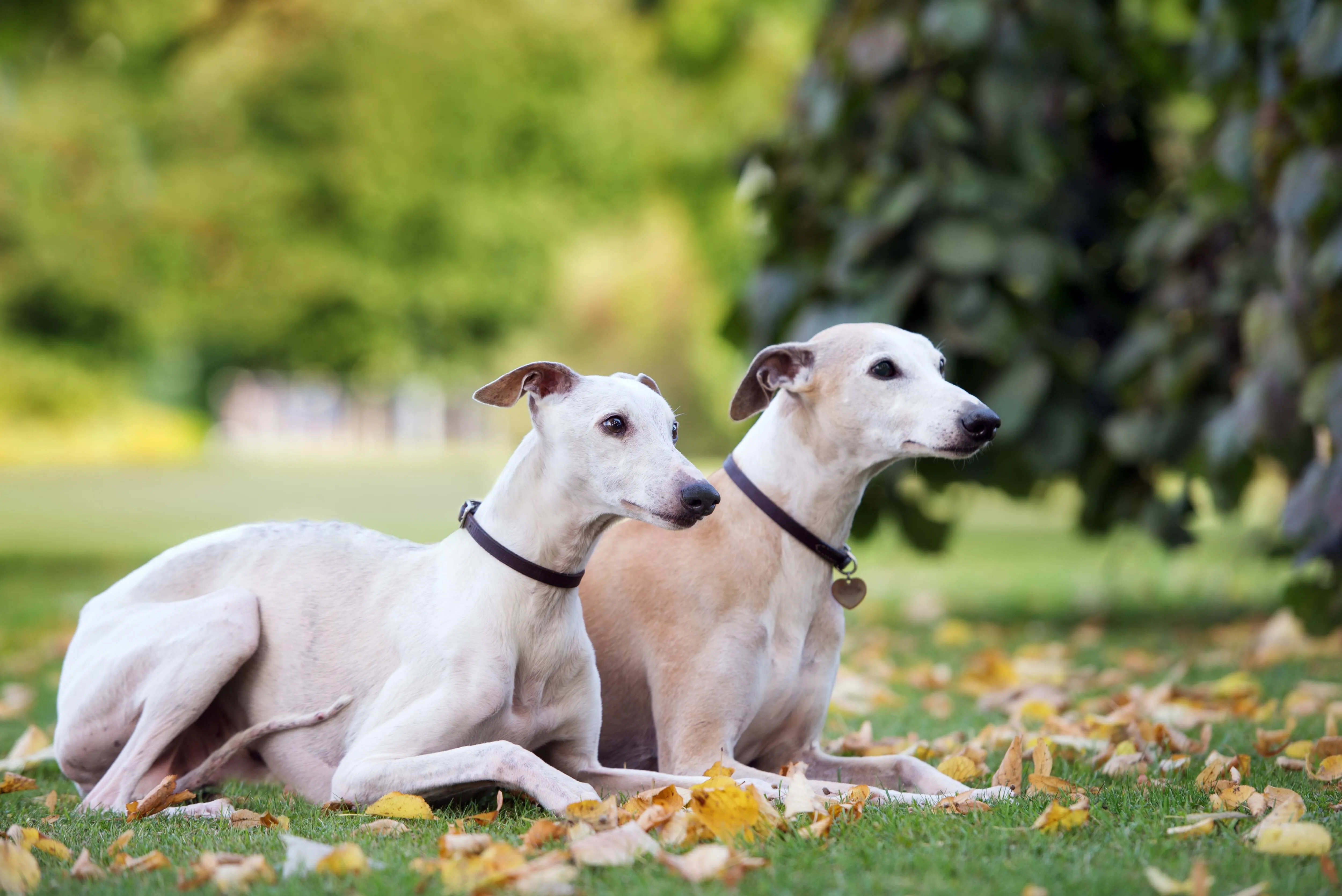 Two sleek tan and white Whippets relaxing on green grass
Two sleek tan and white Whippets relaxing on green grass
Whippets are graceful, speedy sighthounds with very short, fine coats that shed minimally. Despite their athletic build and love for a good chase, Whippets are famously calm and affectionate indoors, often described as “couch potatoes.” They are generally a very healthy breed with an average lifespan of 12–15 years. Their thin coats mean they can get cold easily, requiring sweaters in cooler weather. While healthy, some may be predisposed to deafness, so regular vet visits are recommended.
6. Chinese Crested
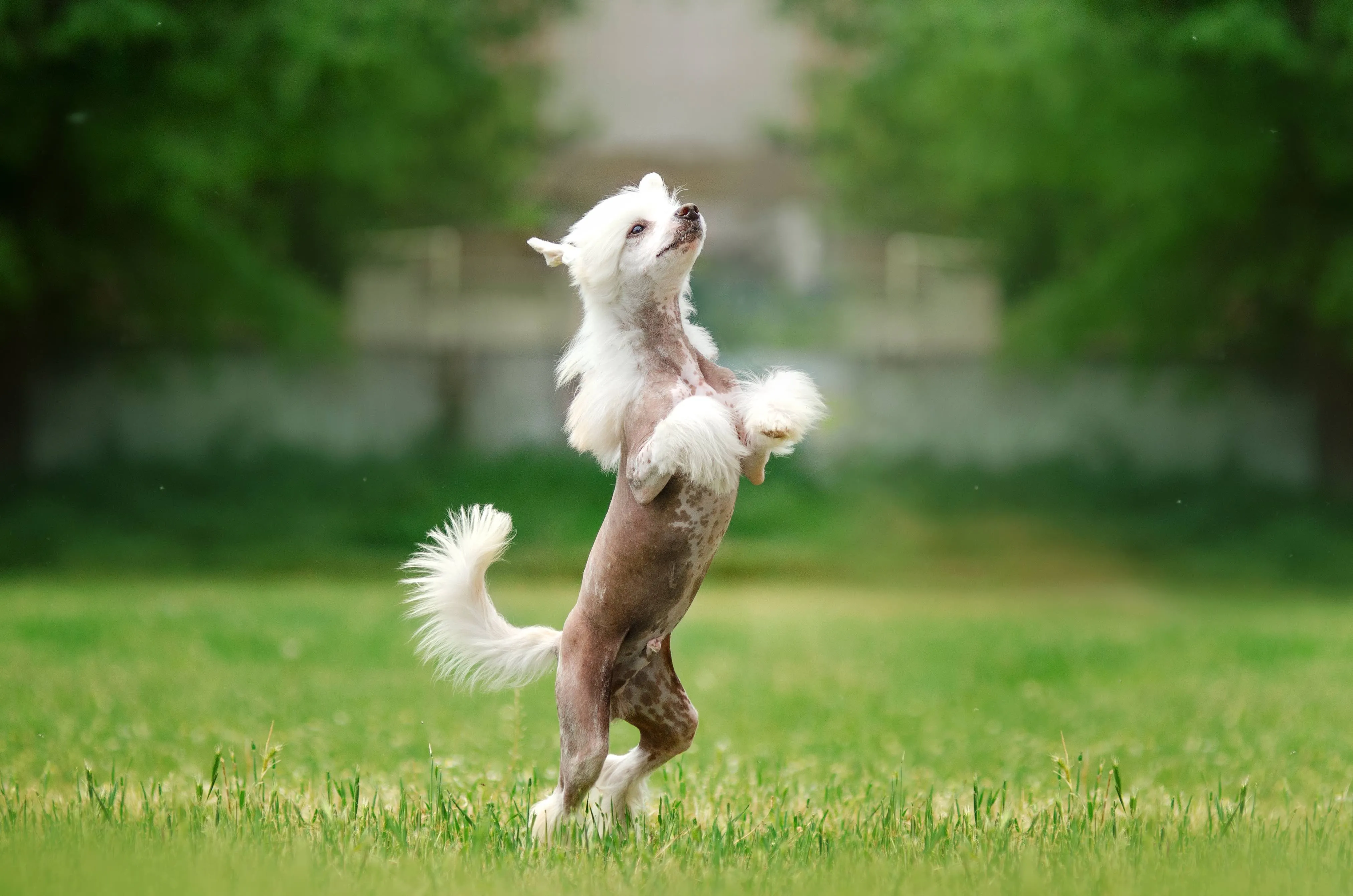 Elegant hairless Chinese Crested dog standing on hind legs in a sunny field
Elegant hairless Chinese Crested dog standing on hind legs in a sunny field
The Chinese Crested comes in two varieties: hairless and powderpuff. The hairless variety sheds virtually none, while the powderpuff (with a full, soft coat) sheds minimally. Both are deeply devoted to their pet parents and are known for their playful and loving personalities. They are generally healthy, though the hairless variety needs special skin care and protection from the elements, while powderpuffs require regular grooming. These elegant dogs are hearty despite their delicate appearance.
7. Greyhound
 Close-up portrait of a majestic brindle Greyhound
Close-up portrait of a majestic brindle Greyhound
Known for their incredible speed, Greyhounds are also surprisingly low-shedding and possess a calm, gentle demeanor once their exercise needs are met. These sighthounds are built for bursts of speed but are equally content lounging on the couch. They are generally a very healthy breed with few genetic predispositions, enjoying a lifespan of 10-14 years. Their lean bodies and strong prey drive require secure fencing and responsible management, but their minimal shedding and good health make them excellent companions.
8. Old English Sheepdog
 Fluffy Old English Sheepdog posing on rocky terrain with a scenic background
Fluffy Old English Sheepdog posing on rocky terrain with a scenic background
With their distinctive shaggy coats, Old English Sheepdogs are surprisingly low-shedding once their puppy coat transitions. While they don’t “shed” like many other breeds, their dense double coat requires extensive grooming to prevent matting. These gentle giants are affectionate, good-natured, and do wonderfully in families, particularly those with children. They are a robust and healthy breed, typically living 10–12 years with a strong constitution and not many breed-specific ailments, making them healthy non-shedding large dogs for committed owners.
9. Portuguese Water Dog
A robust and athletic breed, the Portuguese Water Dog has a single, non-shedding coat that is perfect for allergy sufferers. Originally bred to herd fish, retrieve lost tackle, and carry messages, these dogs are highly intelligent and require plenty of physical and mental engagement. PWDs are generally healthy with a lifespan of 10-14 years, though they can be prone to hip dysplasia and certain eye conditions. Their playful nature and eagerness to please make them excellent companions for active families.
10. Soft Coated Wheaten Terrier
The Wheaten Terrier is a lively, happy dog with a distinctive soft, wavy, non-shedding coat. Known for their “Wheaten greetin'”—an enthusiastic jump to welcome their humans—these dogs are affectionate, friendly, and great with children. They are generally a healthy breed with a lifespan of 12-14 years, though some can be prone to protein-losing enteropathy or renal dysplasia. Regular grooming is essential for their unique coat.
11. Maltese
The Maltese is a small, elegant toy breed known for its long, flowing white coat that sheds minimally and is often considered hypoallergenic. These gentle, fearless dogs are devoted companions and adapt well to apartment living, making them ideal small, low-maintenance, non-shedding dogs for many households. Maltese are generally healthy and long-lived, often reaching 12-15 years or more. However, they can be prone to dental issues and patellar luxation, requiring attentive care.
12. Miniature Schnauzer
Miniature Schnauzers are sturdy, intelligent, and spirited dogs with a wiry, low-shedding coat. Known for their distinctive beard and eyebrows, they are active and alert companions that are eager to please and relatively easy to train. Miniature Schnauzers are generally healthy, living 12-15 years, but can be predisposed to certain conditions like pancreatitis and bladder stones. Regular exercise and grooming, including stripping or clipping, are necessary for their coat type.
13. Yorkshire Terrier
The Yorkshire Terrier, or “Yorkie,” is a small but mighty dog with a silky, non-shedding coat that resembles human hair. Despite their tiny size, Yorkies are confident, adventurous, and full of personality. They are generally a healthy and long-lived breed, often living 13-16 years. While they require daily brushing to prevent matting, their minimal shedding and affectionate nature make them popular small companions. Owners should be aware of potential dental problems and patellar luxation.
14. Shih Tzu
Known as “lion dogs,” Shih Tzus are charming and affectionate companions with long, flowing, non-shedding coats. Bred solely to be companions, they thrive on human interaction and are excellent lap dogs. Shih Tzus are generally healthy for their size, with a lifespan of 10-16 years, but their flat faces can predispose them to respiratory issues in hot weather, and their long coats require daily grooming.
15. Coton de Tulear
The Coton de Tulear is a small, cheerful dog with a soft, cotton-like coat that sheds minimally and is considered hypoallergenic. Originating from Madagascar, these intelligent and playful dogs are known for their gentle nature and strong bond with their families. Cotons are generally a healthy breed with a lifespan of 14-16 years, and while they require regular grooming, their friendly disposition and robust health make them a delightful choice.
16. Lagotto Romagnolo
The Lagotto Romagnolo is an ancient Italian breed known for its curly, non-shedding, waterproof coat and its exceptional truffle-hunting abilities. These medium-sized dogs are intelligent, active, and affectionate, making them wonderful family pets for those who can provide ample mental and physical stimulation. Lagottos are generally healthy, living 14-16 years, though they can be predisposed to juvenile epilepsy and hip dysplasia. Their unique coat requires regular clipping and brushing.
Choosing the Right Healthy, Non-Shedding Dog for You
When selecting your ideal canine companion, remember that health and shedding are just two pieces of the puzzle. Consider your lifestyle, living situation, and how much time you can dedicate to exercise and grooming. Some of these diverse dog breeds may require more extensive grooming than a typical shedding dog, even if they don’t leave fur all over your furniture. For instance, while a Sealyham Terrier is a non-shedding breed, its coat needs regular attention. Researching specific breed characteristics will help you find the perfect match for your family.
Caring for Your Non-Shedding Companion
Regardless of the breed you choose, providing optimal care is key to ensuring a long and healthy life. This includes a balanced diet tailored to their age and activity level, regular exercise to maintain physical fitness and mental well-being, consistent grooming to keep their non-shedding coats healthy and mat-free, and routine veterinary check-ups to catch any potential health issues early. A proactive approach to care will not only enhance their quality of life but also reinforce the strong bond you share.
Conclusion
Finding a healthy dog breed that doesn’t shed offers the best of both worlds: a delightful companion with a strong constitution and an allergy-friendly coat. From the intelligent Poodle to the charming Havanese, and many other excellent healthy non-shedding options, there’s a perfect furry friend waiting to join your family. By carefully considering their needs and your lifestyle, you can welcome a dog that brings joy, cleanliness, and robust health into your home for many years to come. Explore more of our articles to learn about caring for your specific breed!
